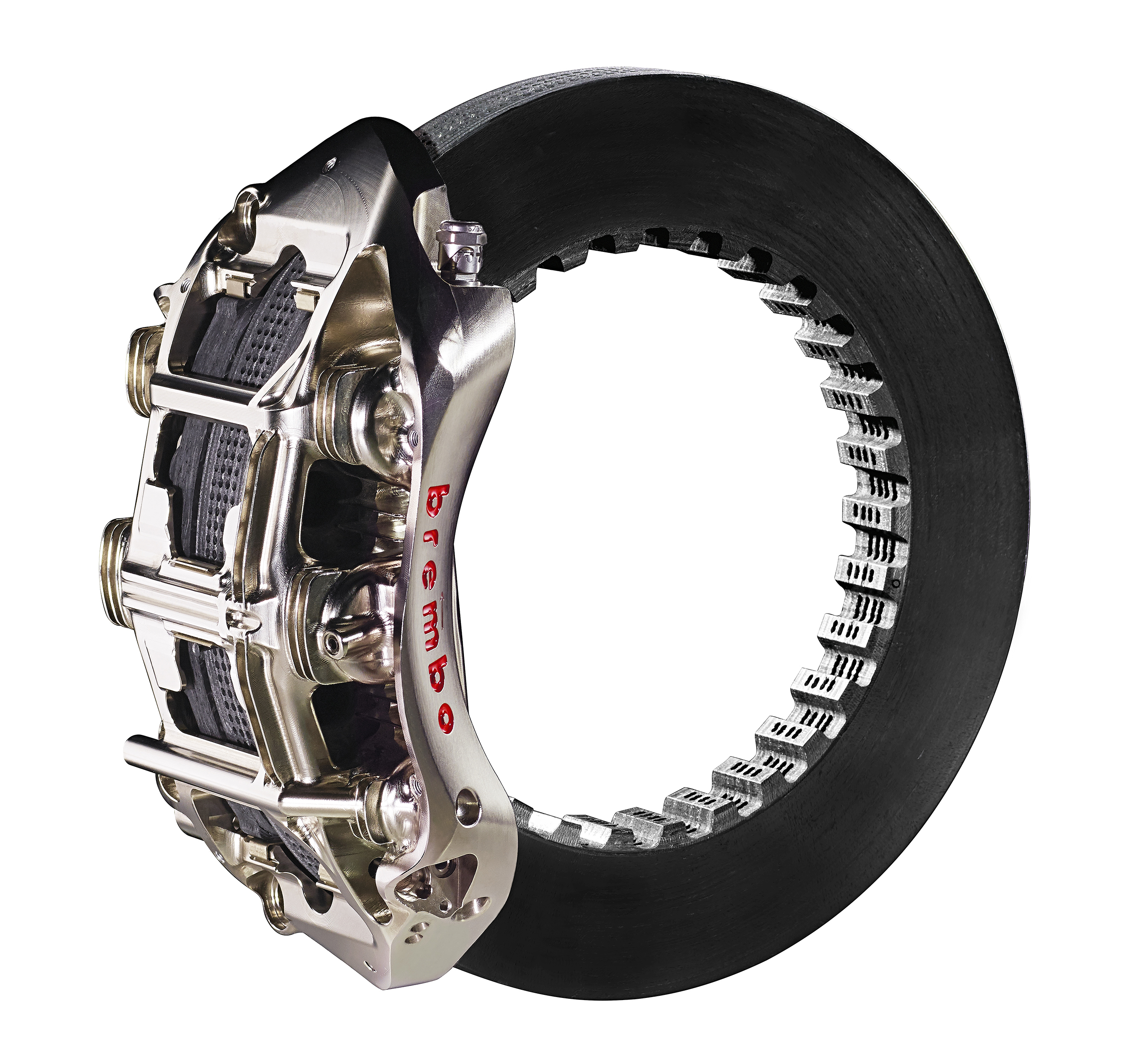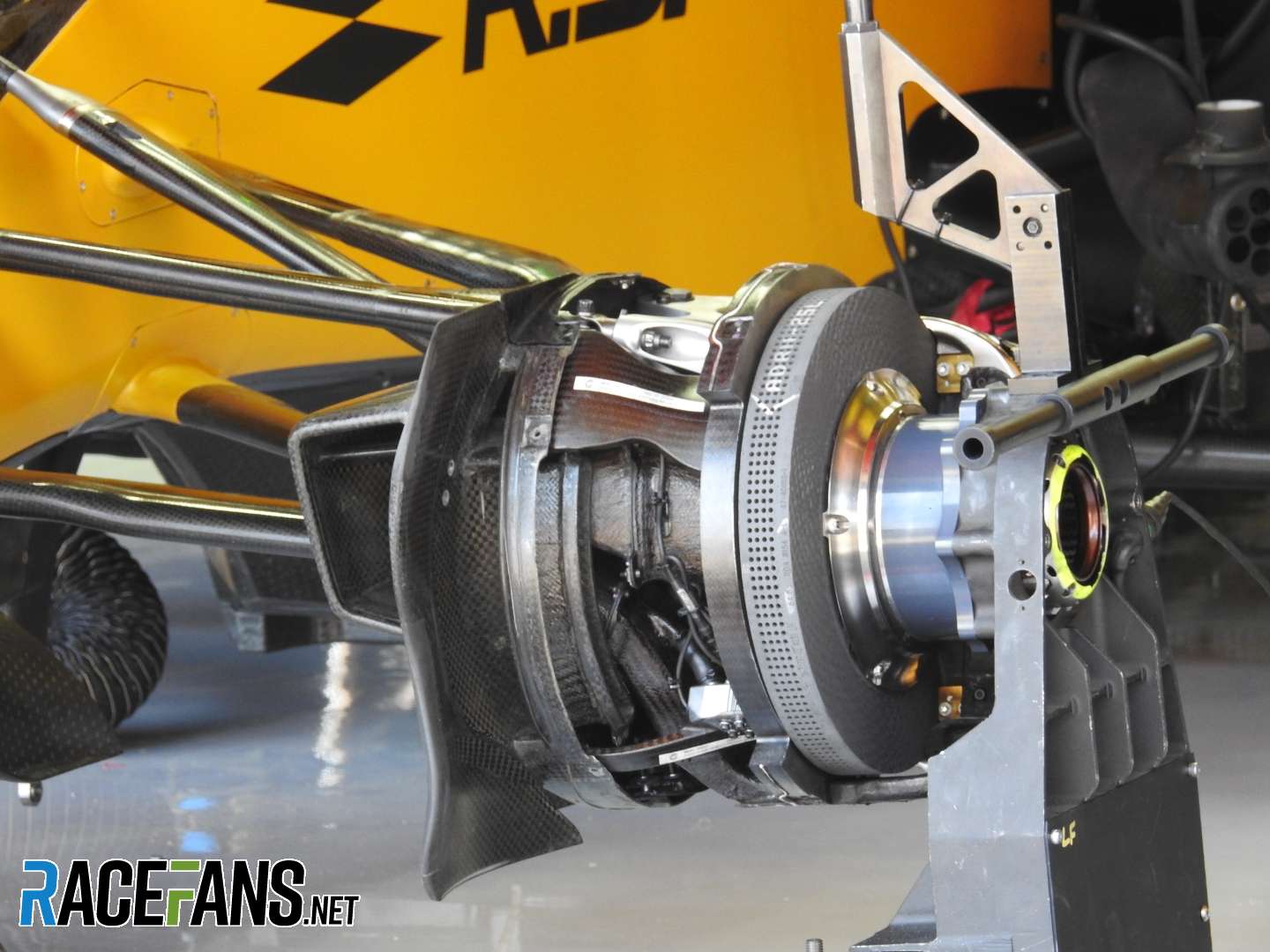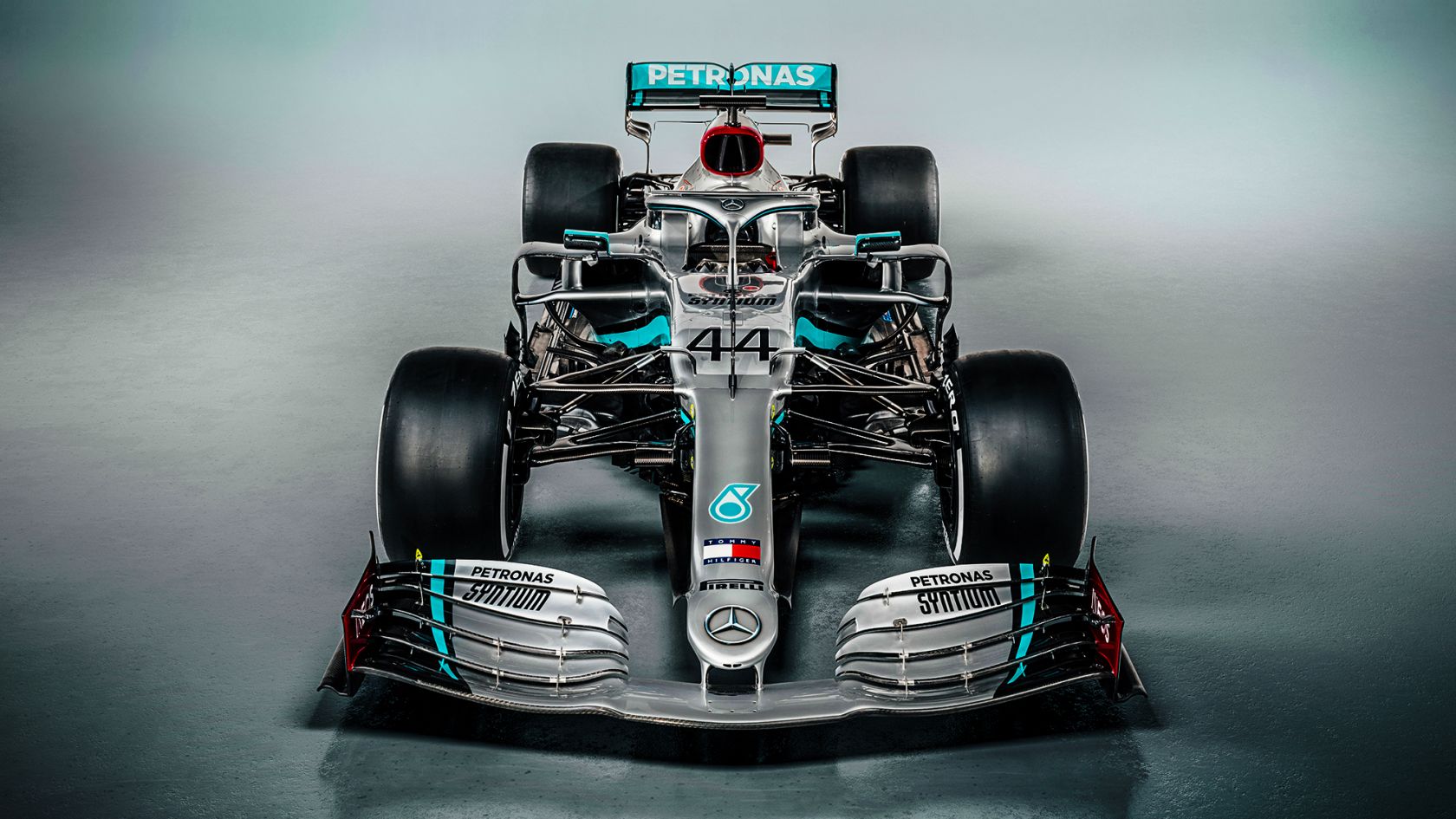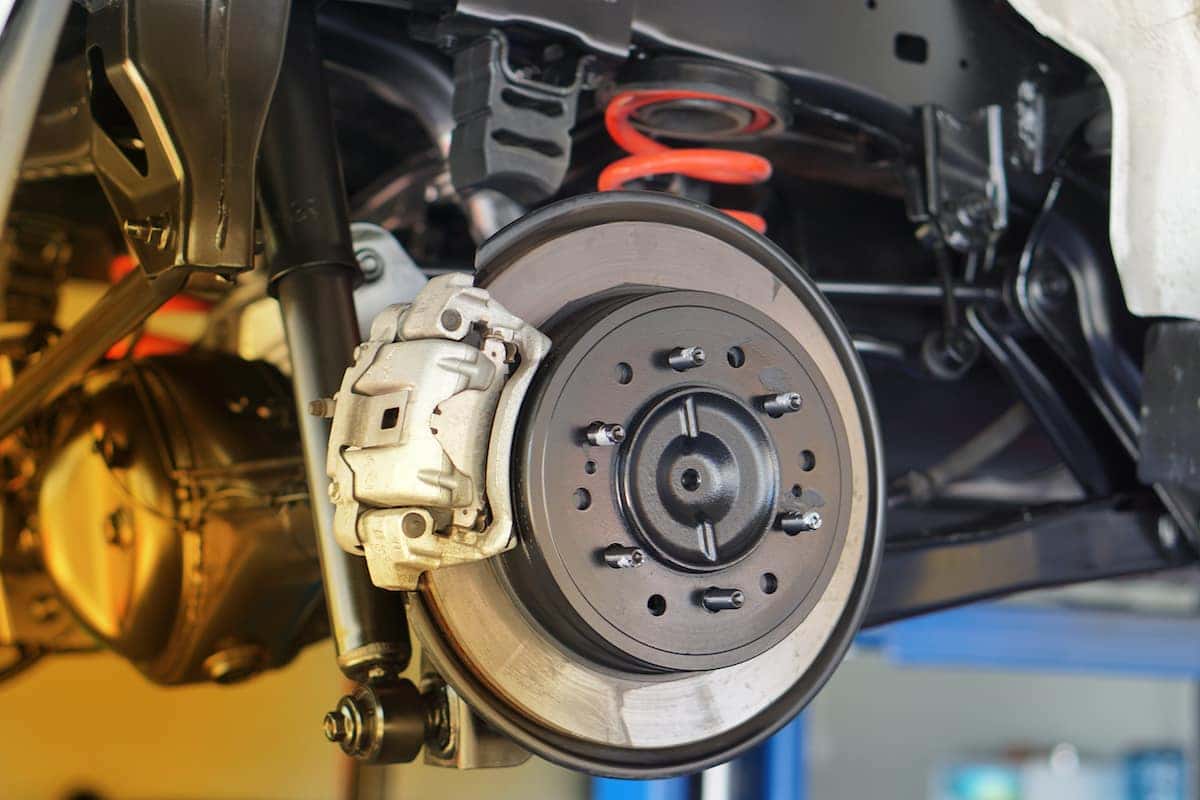F1 Brakes (1536×1021)

Latest News / Technical Video - the ongoing evolution of F1 brakes 31 Jul 2015 Share Like every other part of a Formula One car, brake systems have continued to evolve as teams seek to enhance performance.
F1 Carbon brake discs 11" x 26mm

Until the early 1980s, Formula 1 used cast iron brake discs and aluminum calipers not too dissimilar to those found on road cars. As Steve Bryan - trackside man in F1 from the 80s until 2017 for long-time brake supplier AP Racing - puts it, "I think the calipers used to be about £60 each. That wouldn't even buy a pair of pads today.
New tires, ‘Halo’ mean changes for F1 brakes

Mike Elliott, Technology Director for the Team, talks us through how the braking system works in an F1 car, how the various parts work individually and how t.
The brakes used in a Formula 1 car being tested TheLOLempire Brembo

Formula 1 News Explaining the magic of F1 brakes A Formula 1 car's brakes can dissipate almost three times as much energy as the engine is capable of producing - so they're vitally.
Brake assembly on a McLaren F1 car · RaceFans

PART 1: Friction material. The brakes on a Formula 1 car may look hugely complex but in reality they work in the exact same way as the ones on your road car do. When the driver presses his brake pedal he is pushing hydraulic fluid down lines to push out pistons in the caliper (sometimes called 'pots' - i.e. six pot calliper.
The Technical World of Formula 1 Explained Ferrari F2012 Singapore

Formula One Car Brakes. The team make the brakes from carbon fiber composite materials for both the discs and pads. The brakes operate by a brake-by-wire system that modulates the hydraulic pressure applied to each wheel according to the driver's input and the available grip.
How F1 Brakes Stop from 200mph to 0 in 4 Seconds F1 Engineering YouTube

Thanks to the extensive experience gained over 48 Formula One seasons, in which cars with Brembo brakes have won 27 Drivers' World Championships, 32 Constructors' World Championships and 485 Grand Prix races, the company has developed new braking systems customized for each team and will supply most of the single-seaters with hydraulic (calipers, master cylinders and by-wire units) and.
Formula One Front Brake Assembly Photo by Jon Formula One front

A key point of intrigue for the fans, both casual and avid, is how hard a Formula 1 car can brake. Fans are often surprised to find that an F1 car can decelerate at more than 5g, that means under peak braking, the driver's body is moved forward with a force of five times that of the unaccelerated state.
F1 should evaluate more roadrelevant brakes, says supplier Brembo

The short answer is: very similarly to road car brakes. While a Formula One car performs at far higher speeds and requires a far shorter braking distance, the primary principle remains the same: to effectively remove the car's kinetic energy and bring it to a quick stop. Disc brakes with rotating discs are squeezed between pads by use of a.
Formula 1 braking system

This blend of downforce, tyres and braking system makes F1 cars the most efficient decelerating race machines in motorsport. Discs, calipers Everything depends on the bite of the brakes on the discs, so F1 cars run carbon discs and pads with aluminium six pot calipers.
McLaren Formula 1 Take a brake

Formula 1 brakes are some of the most incredible pieces of tech on the planet. They're able to haul a car doing over 200 mph down to walking speed in a matter of seconds, generating up to 5.
Image result for f1 brakes Rear brakes, Formula one, Carbon fiber

During a complete season, Brembo provides each team, consisting of two cars, an average from 140 to 240 brake discs.. which quickly debuted in Formula 1 racing. Since then, F1 brake calipers have undergone numerous evolutions. Currently, roughly 10 hours of processing are required to manufacture an F1 brake caliper..
Formula 1 Brakes 200 mph to 0 in Four Seconds The BRAKE Report

Formula One cars have used electronic 'fly-by-wire' throttle technology for years, but this season the sport has also adopted electronically-controlled rear brake systems for the first time. But just what is brake-by-wire and how does it work? We guide you through the technology…
Formula 1 Brakes Explained Engineering Behind F1 Brakes

Of course, Formula 1 braking components are designed only with performance in mind: their maximum life would be no more than 600 miles (and no F1 team would use a disc for more than one race), whereas a road disc would endure 50,000 miles or more. Brake pads are similarly carbon-reliant.
Formula RO Racing Brakes Review Pinkbike

Similar to a road car, the brakes on a Formula One car work on all four wheels. So how exactly does the system work? When the driver steps on the brake pedal, it compresses two master brake cylinders - one for the front wheels and one for the rear - which generate fluid pressure. At the front, the system is very straightforward.
The four main types of car brakes Toyota of Orlando

Formula one brake systems are highly complex pieces of the car that can withstand temperatures of 1000 degrees Celsius. We explain how they work here.